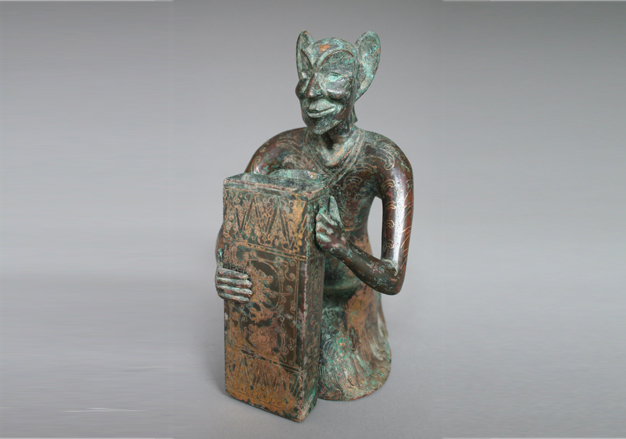A small bronze figurine of “feathered man” (Fig.1) was discovered in 1987 in a tomb of the mid- or late Eastern Han Dynasty in the eastern suburb of Luoyang, Henan Province [1]. This entirely-gilded bronze feathered man kneels on the ground, the upper part of his body held erect, and holds in arms a tube-shaped vessel composed of a rectangular part at the front and a round part at the back. The figurine features deep-set eyes, a high nose and a pair of big ears higher than the top of his head. Short bearded, the man has long hair draping behind the neck. He is clad in a close-fitting robe tied with a band. A pair of wings rise upwards behind the shoulders. The legs are also carved into feathered wings. The figurine is carved entirely with fine designs of feathers, scrolls and clouds. The lidless tube-shaped vessel is hollow inside and carved with triangular and cloud designs.
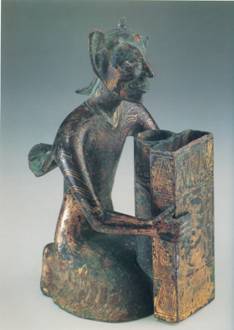
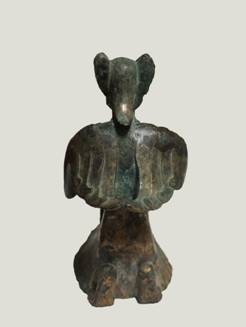
Fig.1 The profile and back of the gilded bronze feathered man
The feathered man has a pair of long ears extending beyond the top of his head, looking rather similar to the image of an immortal described in some literary works of the Han Dynasty. For example, A Long Poem of the Han Dynasty read: “An immortal rode a white deer, his hair short and ears long. Following him to a celestial mountain, I found celestial herbs there. The immortal came to my lord and gave him a jade case of herbs. My lord took the herbs and grew stronger day by day. His grey hair turned black again and he enjoyed a happy long life”. [2]
The feathered man features deep-set eyes and a high nose, looking quite different from the people in the Central Plains at the time. According to The Masters/Philosophers of Huainan: Responses of Dao, the immortal, the mystic Lu Ao in the era of the First Emperor of Qin met, featured “deep-set eyes, black sideburns, shrugged shoulders, broad forehead and sunken cheeks”. [3] Foreigners came to China after the route between China and the Western Regions was opened up. In the eyes of the Chinese, those foreigners “deep-set eyes, black sideburns, shrugged shoulders, broad forehead and sunken cheeks”. [4] Therefore, this foreigner-like bronze feathered man reflects to some extent the contact and exchange between the Chinese people and foreigners back then.
Cultural relics with the image of feathered man were found in the archaeological discoveries concerning the Han Dynasty. In addition to sculptures, such an image was often seen in the murals, brick/stone with relief patterns and burial objects unearthed from tombs of the Han Dynasty. It is largely related to the pursuit of immortality at the time.
The thought of immortality was flourishing during the Qin and Han dynasties. Wang Chong of the Eastern Han Dynasty wrote in his The Balanced Inquiries: A Refutation of the Unreal: “Those who wanted to be immortal must grow feathers of a certain length first, before they could fly to the sky from a multi-storied building. That was the so-called heaven-going or becoming immortal”. [5] As indicated, an immortal must have feathered wings. The image of a “feathered man”, with a pair of feathered wings on shoulders and having unique facial features, was often found in the historical documents and archaeological discoveries dating back to the time.
As Songs of Chu: Far-off Journey said, “(I) went to Danqiu where feathered men live, and remain there forever”. Wang Yi gave his explanation: “According to The Classic of Mountains and Seas, feathered men were immortal. Or, a man became immortal if feathers grew on his body”. [6] The Classic of Mountains and Seas: Classic of Regions Beyond the Seas: South says in Volume Six: “Long-headed feathered men lived in (its) southeast. Or, long-faced feathered men lived to the southeast of the land where lovebirds resided”. [7] A lacquered wood-sculpted feathered man (Fig.2) was unearthed in 2002 from the tombs of the Warring States Period at Tianxingguan in Jingzhou, Hubei Province. Standing on a flying bird, the wingless feathered man features a bird’s beak and tail. The legs are carved with scale patterns and the feet with the bird’s claws. [8]
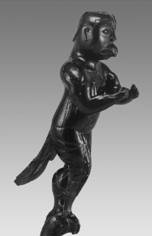
Fig.2 Wood-sculpted feathered man unearthed from Tomb No.2 of the Warring States Period at Tianxingguan in Jingzhou, Hubei Province

Fig.3 The feathered man in the mural of Bu Qianqiu’s tomb of the Western Han Dynasty in Luoyang
The front part of the vault of the main tomb chamber in Bu Qianqiu’s tomb of the Western Han Dynasty in Luoyang, Henan Province, is painted with a scene in the fairyland: A feathered man holding a flag with yak’s tail (Fig.3) leads a ceremonial procession to Queen Mother of the West. Between the two there are the moon and the toad among clouds. [9] The mural on the vault of the main chamber in the tomb of the Western Han Dynasty at Qianjingtou in Luoyang illustrates a feathered man riding a dragon to the sky (Fig.4). The high-nosed feathered man seems to fly against wind, with his long hair fluttering. [10] On the branches of the pottery oil lamp stand (Fig.5) unearthed from the tomb of the Han Dynasty at Jianxi in Luoyang there are feathered men. Not that exquisite in craftsmanship, each feathered man still features typical long ears higher than the top of the head and wings on shoulders. [11]
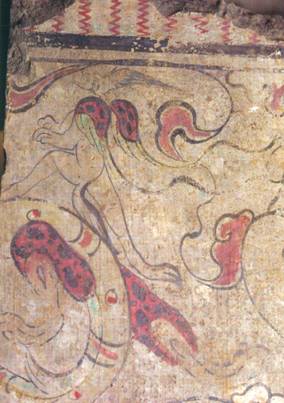
Fig.4 The feathered man depicted in the mural of the tomb at Qianjingtou in Luoyang
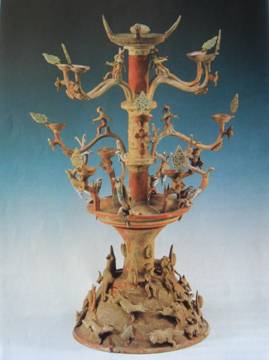
Fig.5 Pottery oil lamp stand unearthed from the tomb of the Eastern Han Dynasty at Jianxi in Luoyang
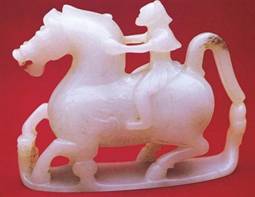
Fig.6 Jade-sculpted feathered man riding a heavenly horse unearthed in Xianyang, Shaanxi Province
A jade-sculpted feathered man riding a heavenly horse (Fig.6) was unearthed in 1996 at the ruins of Wei Mausoleum of the Western Han Dynasty in the Xinzhuang Village in Xianyang, Shaanxi Province. The feathered man holds glossy ganoderma in one hand and advances on the back of a heavenly horse. [12]
The stone relief on the door lintel of the rear tomb chamber in the Han tomb at Jiunvdun in Suining in Xuzhou, Jiangsu Province, depicts from the right to the left a Chinese unicorn, glossy ganoderma, a feathered man holding a flag with yak’s tail, a nine-branch oil lamp stand, a feathered man, shafu (an auspicious plant) and celestial fruit. Feathered men were associated with immortal and elixir. (Fig.7) [13]

Fig.7 Feathered men depicted in the stone relief on the door lintel of the rear tomb chamber in the Han tomb at Jiunvdun in Xuzhou, Jiangsu Province
A stone relief of the Han Dynasty unearthed in Xinjin, Sichuan Province, illustrates two feathered men playing liubo, an ancient Chinese board game. Cao Zhi wrote in his Poem of Immortals: “Two immortals play liubo board game at the foothill”. (Fig.8)
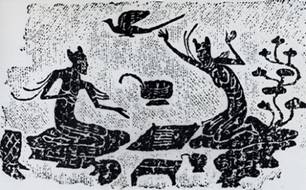
Fig.8 Feathered men depicted in the stone relief of the Han Dynasty unearthed in Xinjin, Sichuan Province
In general, the image of a feathered man is usually found in a scene of the fairyland, as an escort or servant leading the way, riding a dragon or chariot, holding herbs, or playing the liubo game or with animals.
A bronze figurine of feathered man was unearthed in 1966 at the ruins of the Han Dynasty in the Nanyufeng Village in Xi’an, Shaanxi Province. The place was less than five meters south to the northern wall of the Palace of Eternal Happiness. The 15.3-centimeter-high non-gilded bronze figurine of feathered man is basically the same in shape and features as the one unearthed in Luoyang, except for the missing tube-shaped vessel. [14] (Fig.9) Nonetheless, there is a semi-circular vertical hole between the legs of the feathered man unearthed in Xi’an, of the same design for the tube-shaped vessel of the feathered man unearthed in Luoyang. It is reasonable to say that the bronze feathered man unearthed in Xi’an must have held a similar tube-shaped vessel as well.
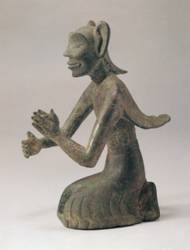
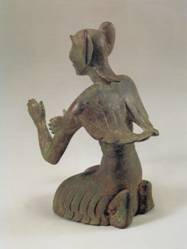
Fig.9 Bronze feathered man unearthed in Xi’an and its back
The bronze figurine of the feathered man unearthed in Xi’an was discovered in a place less than five meters north to the Palace of Eternity of the Han Dynasty, thus quite likely to be a piece used in the imperial palace. The one unearthed in Luoyang was a burial object from a tomb of the Eastern Han Dynasty. According to the excavation report, a jade suit sewn with gilded-copper threads was also unearthed from that tomb. As described in Book of the Later Han: Etiquette, “jade suits sewn with silver threads were granted to kings, dukes, duchesses and princesses upon their death, and jade suits sewn with copper threads to royal ladies and conferred-titled princesses”. The owner of that tomb might be a king or duke or a prominent figure. As the bronze figurine of feathered man unearthed in Xi’an was discovered near a palace, it must have belonged to someone of a high social rank.
The idea of immortality was thriving in the Han Dynasty. In addition to feathered-man figurines, there were many other pieces pertaining to the thought of immortality then.
A goblet-shaped Boshan censer was a common utensil during the Han and Jin dynasties. The mountain-shaped lid decorated with various animal patterns symbolizes the legendary mountains on seas. Incense burnt inside, smoke comes out from the mountain-shaped lid in openwork. One may feel as if he were in a fairyland. (Fig.10)
Pottery building models are commonly-seen burial objects in the tombs of the Eastern Han Dynasty and also closely related to the idea of being immortal. (Fig.11) Emperor Wu of Han was keen on being immortal, and Gongsun Qing said that “celestial beings love living in multi-storied buildings”. [15] Emperor Wu then built many towered buildings in Chang’an and Ganquan, anticipating the arrival of immortals. [16] As written in The Balanced Inquiries: A Refutation of the Unreal, “Those who wanted to be immortal must grow feathers of a certain length first, before they could fly to the sky from a multi-storied building. That was the so-called heaven-going or becoming immortal”. [17] Thus, the image of a towered building was related to the idea of being immortal.
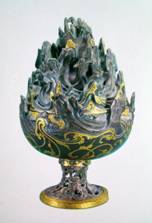
Fig.10 Gold-inlaid Boshan censer unearthed from the Han tomb in Mancheng, Hebei Province
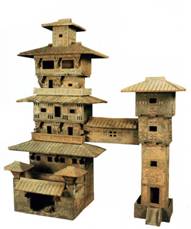
Fig.11 Pottery multi-storied granary model unearthed from Tomb No.6 at Baizhuang in Jiaozuo
The gilded bronze feathered man holds hollow rectangular and cylindrical tube-shaped vessels. What do they imply?
Your answer please, if you have any questions or answer, please feel free to send us email, we are waiting for your answers and participation, and your comments, answers and suggestions will be highly appreciated. We will select and publicize the most appropriate answers and comments some time in the future.
Weekly Selection Email: meizhouyipin@chnmus.net

C5M346 at Luoyang Locomotive Factory of Henan Province:
A Tomb of the Eastern Han Dynasty Where the Gilded Bronze Feathered Man Was Unearthed
Luoyang Municipal Work Team of Archaeology launched an excavation project in a tomb of the mid- or late Eastern Han Dynasty in January 1988 at the site of the workers’ hospital affiliated to Luoyang Locomotive Factory. The mound on the ground was large and high. The tomb chamber was of a brick-vaulted double-chamber structure. Many burial objects were left inside, even though the tomb had been robbed before. The jade suit sewn with gilded-copper threads unearthed from the tomb revealed the tomb owner’s identity.
Alternatively known as the “jade box” or “jade weight”, a jade suit was the burial clothes for an emperor or noble in the Han Dynasty to wrap the body after death. The people at the time believed that jade could prevent the corpse from rotting. A jade suit served as the symbol of social status and hierarchy. An emperor and some high-ranking officials enjoyed jade suits sewn with gold threads, and other nobles used jade suits sewn with silver or copper threads. As indicated by the jade suit sewn with gilded-copper threads unearthed from the tomb, the owner might be a king or duke or a prominent figure. And it was natural to find such a delicate gilded bronze feathered man in the tomb.
